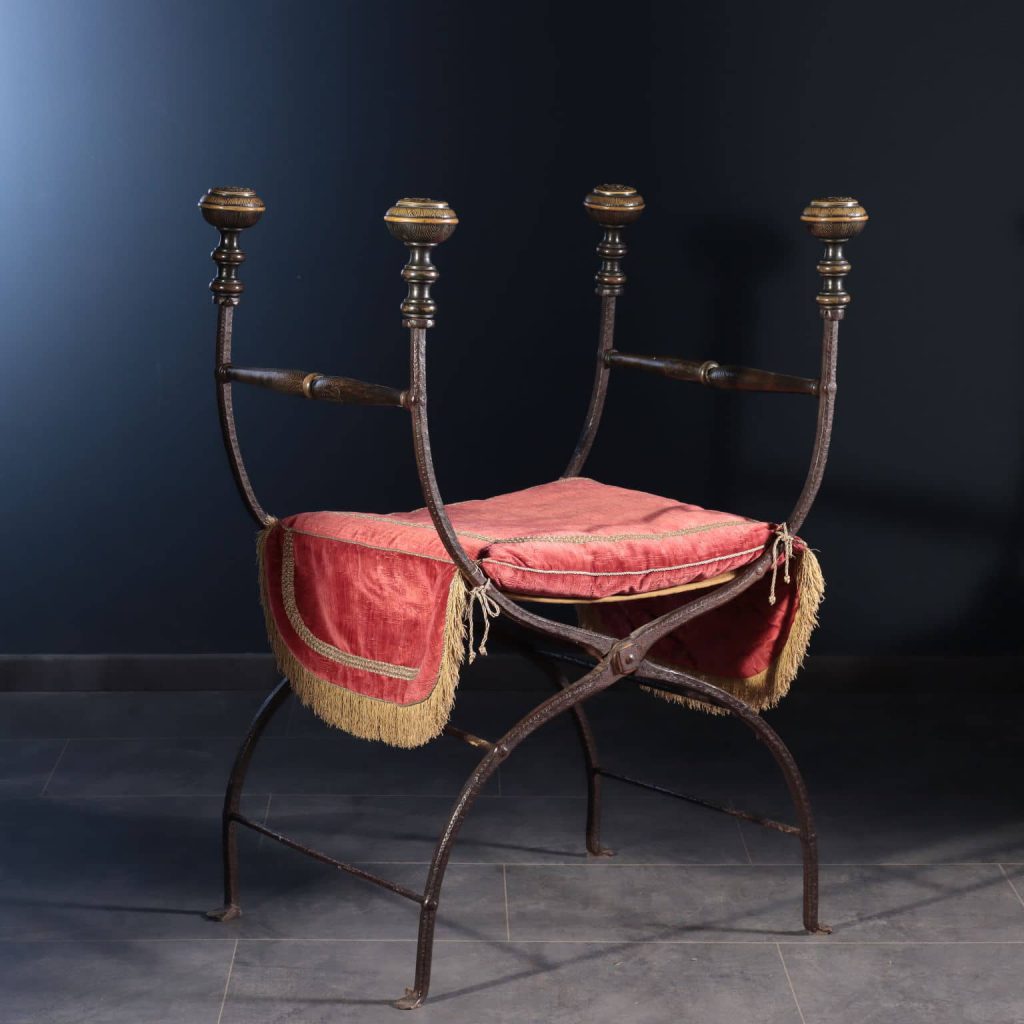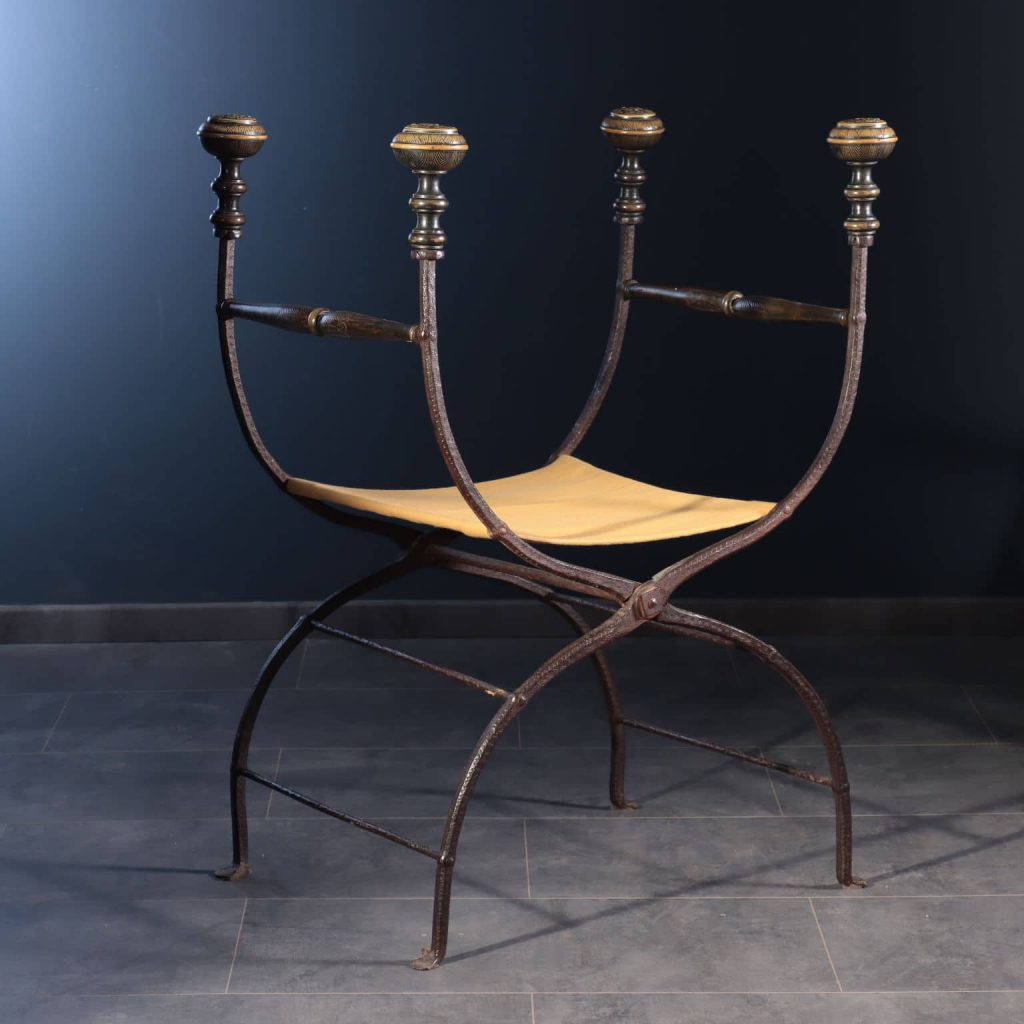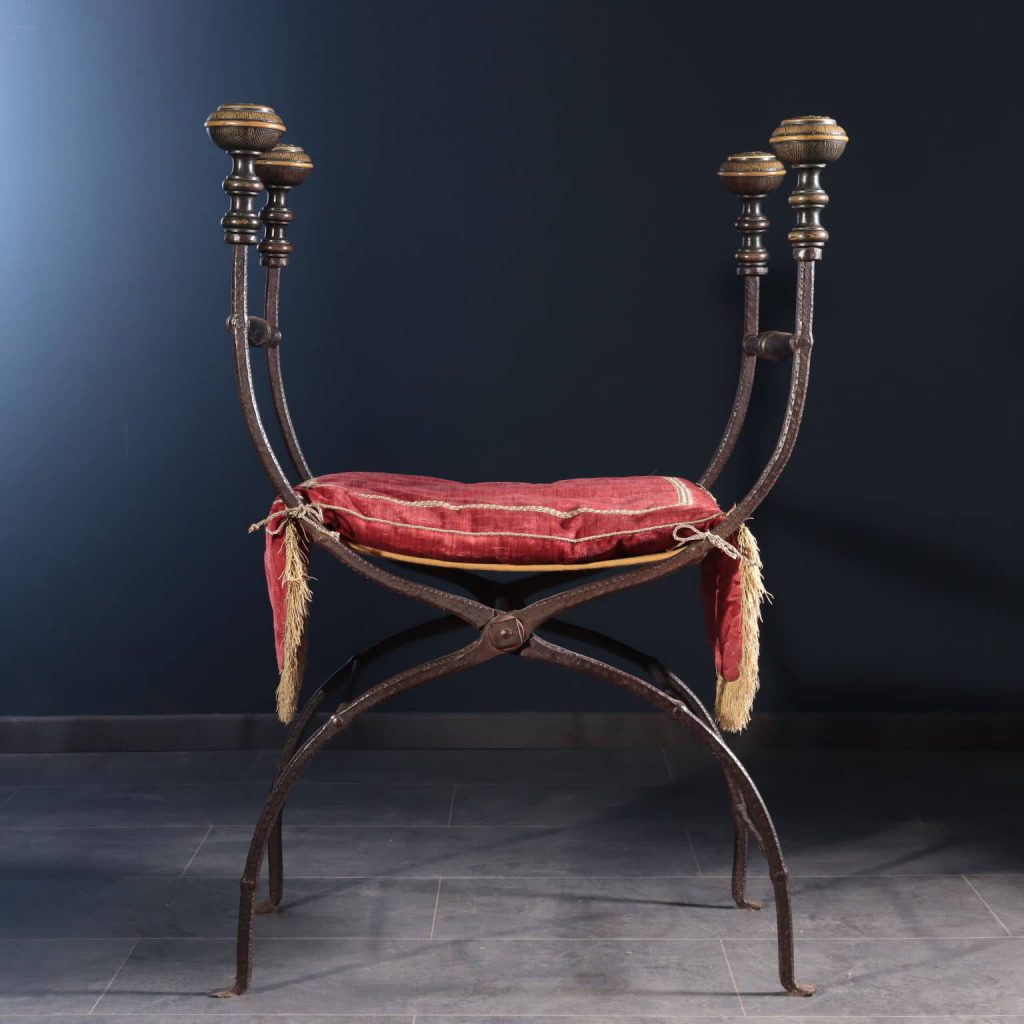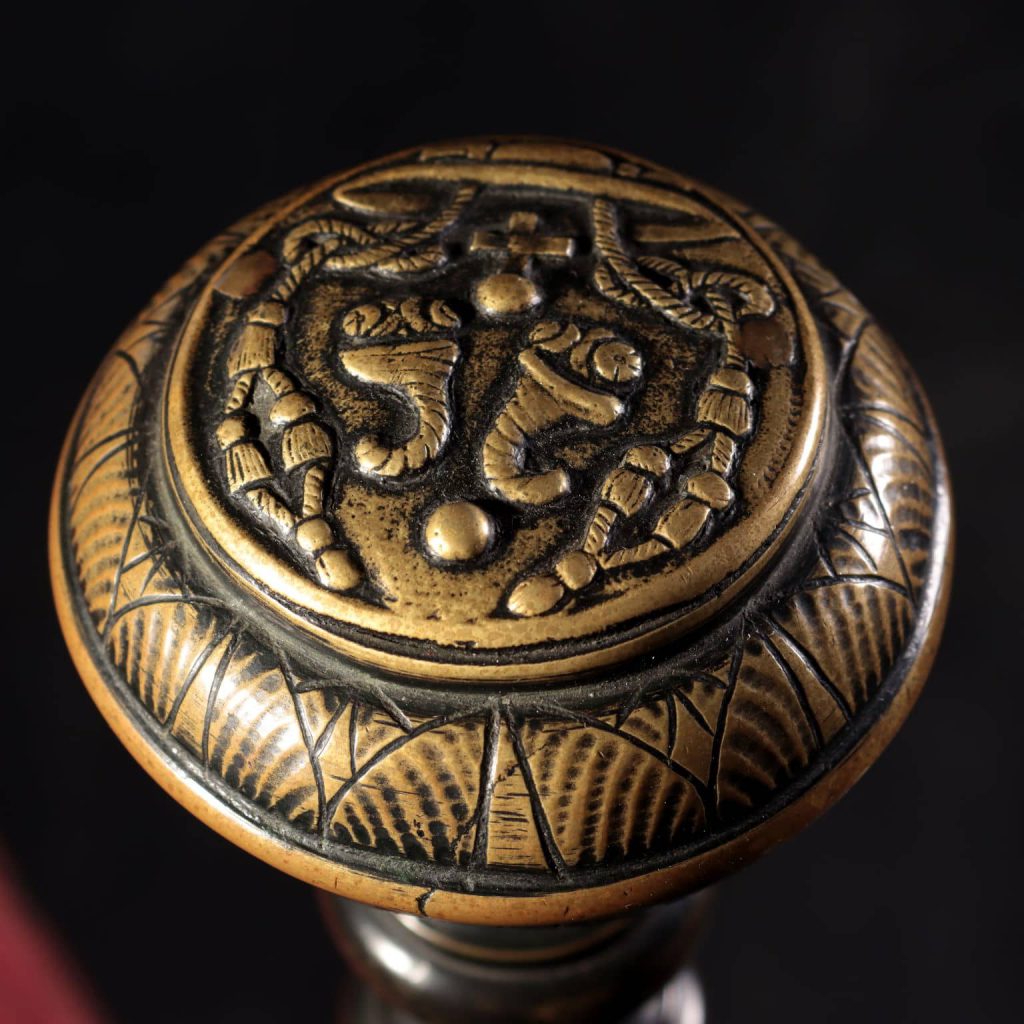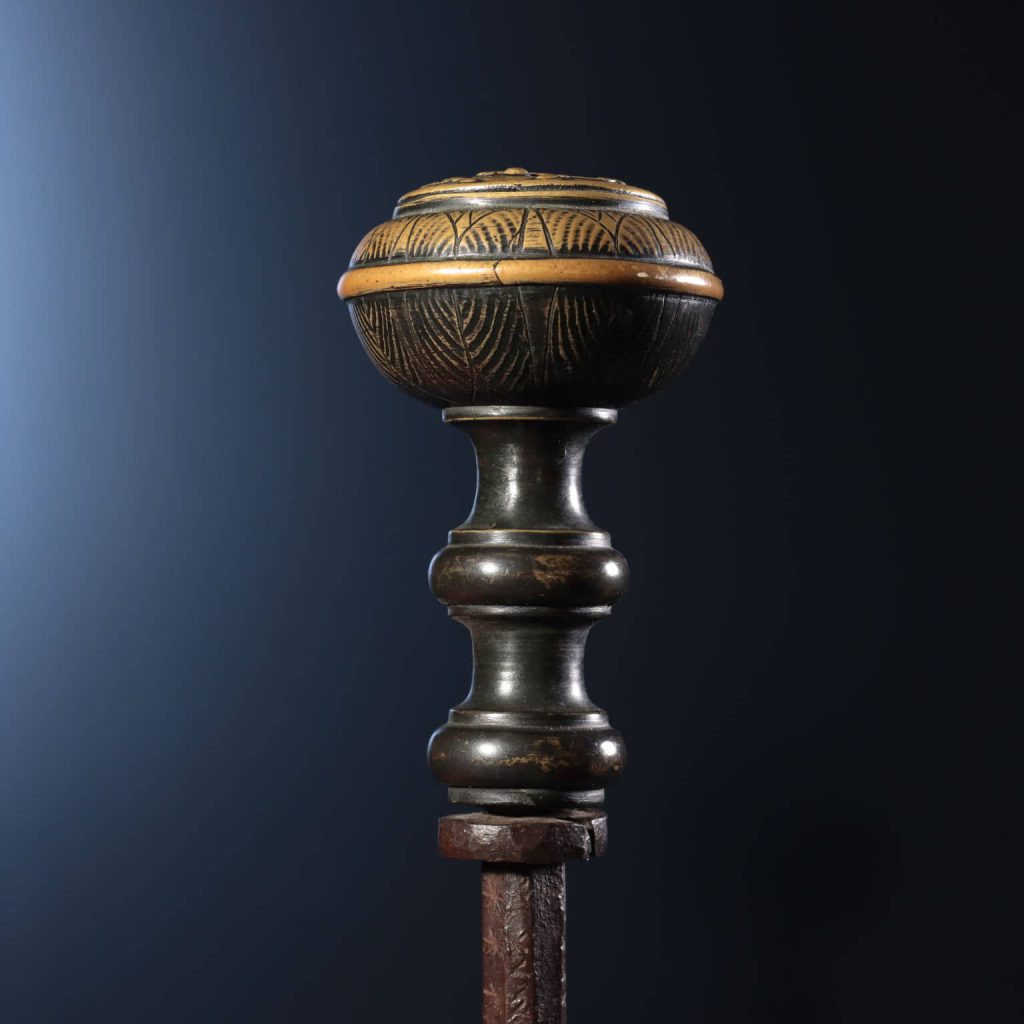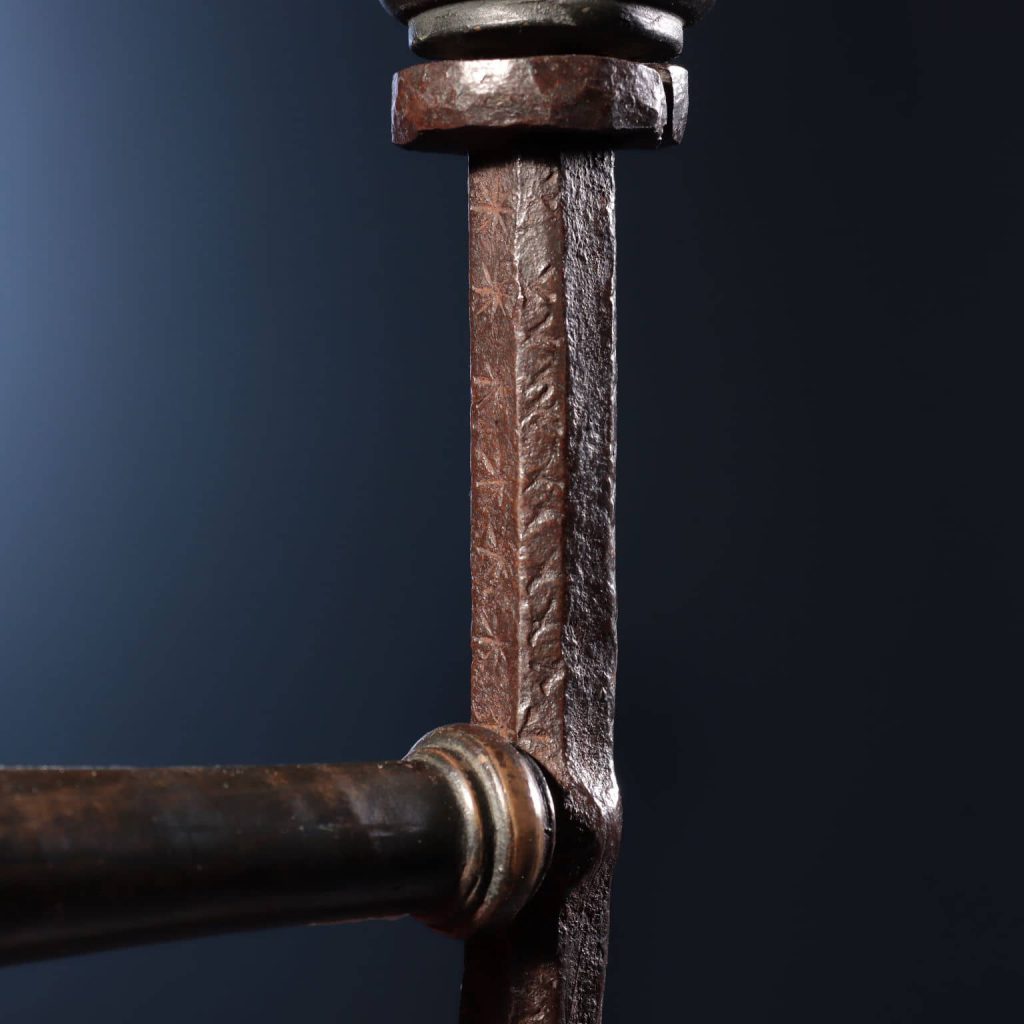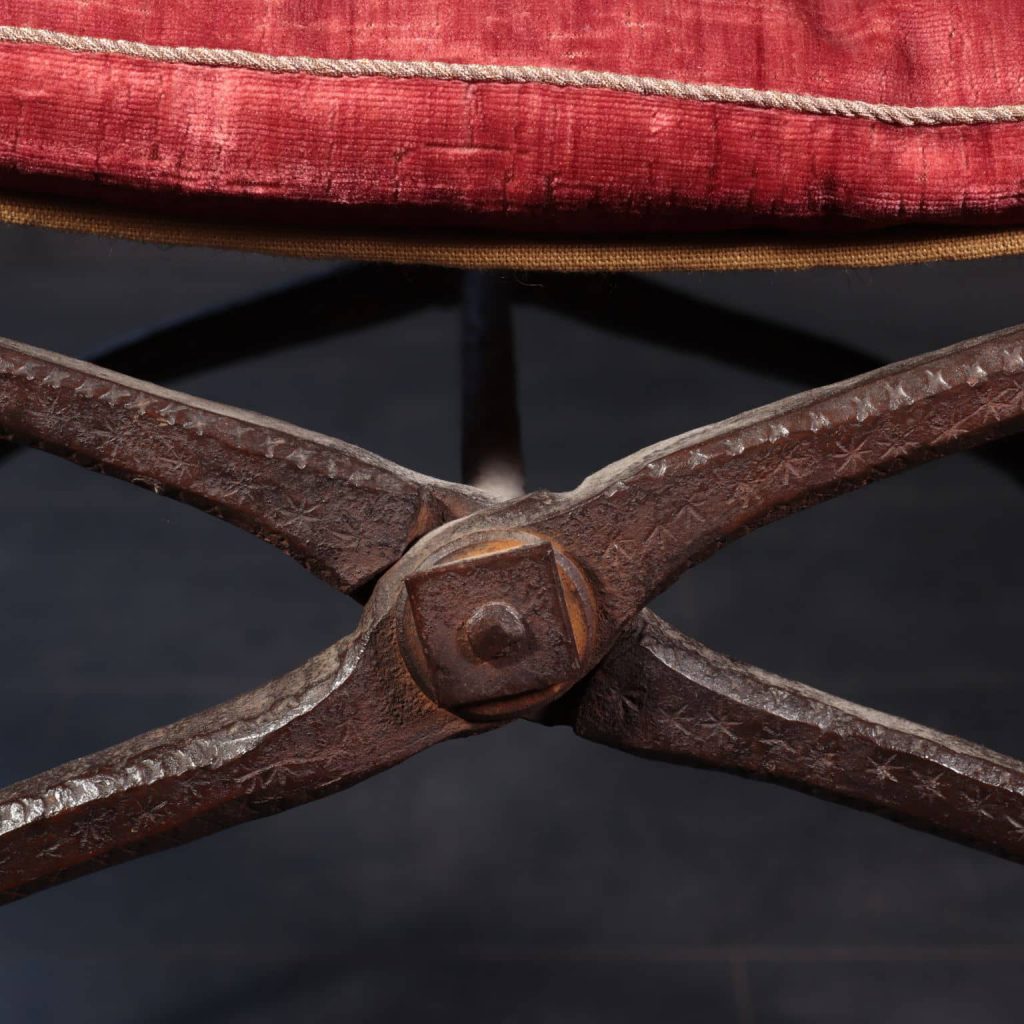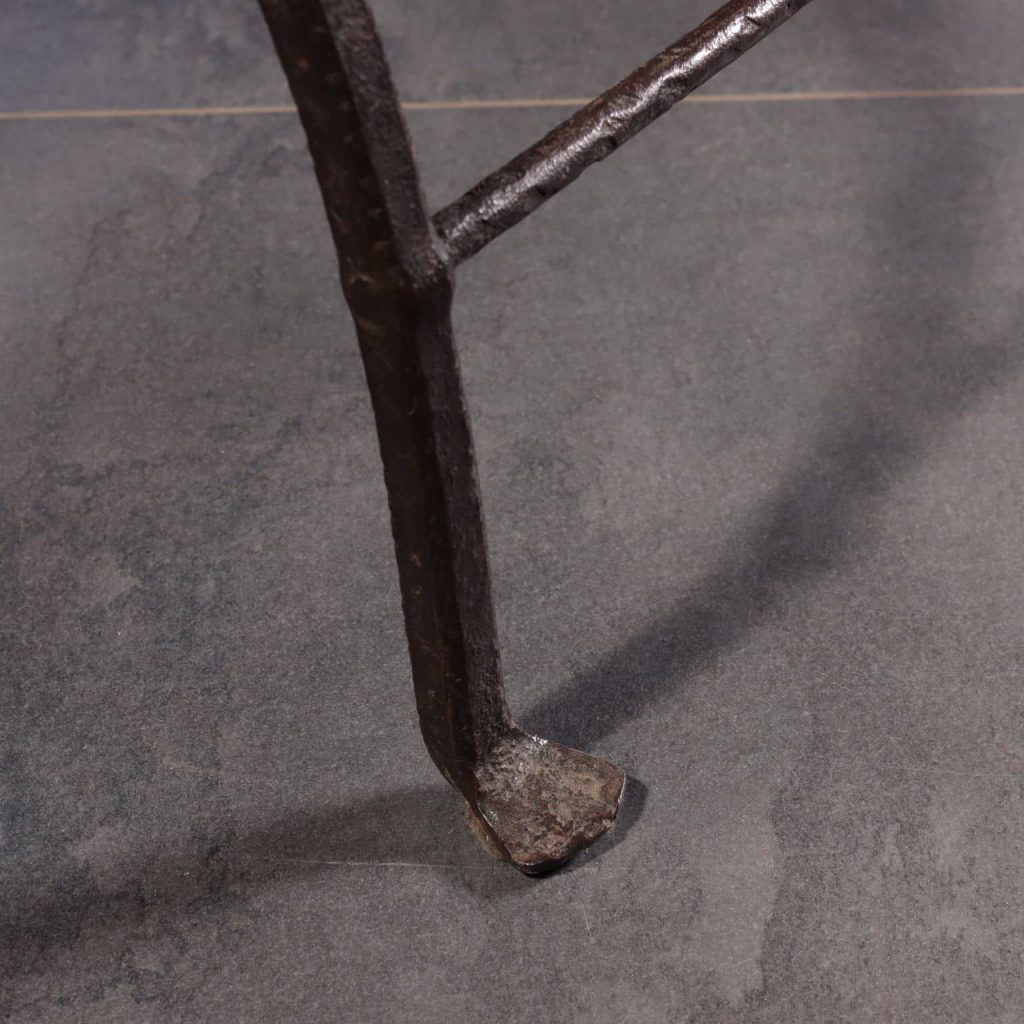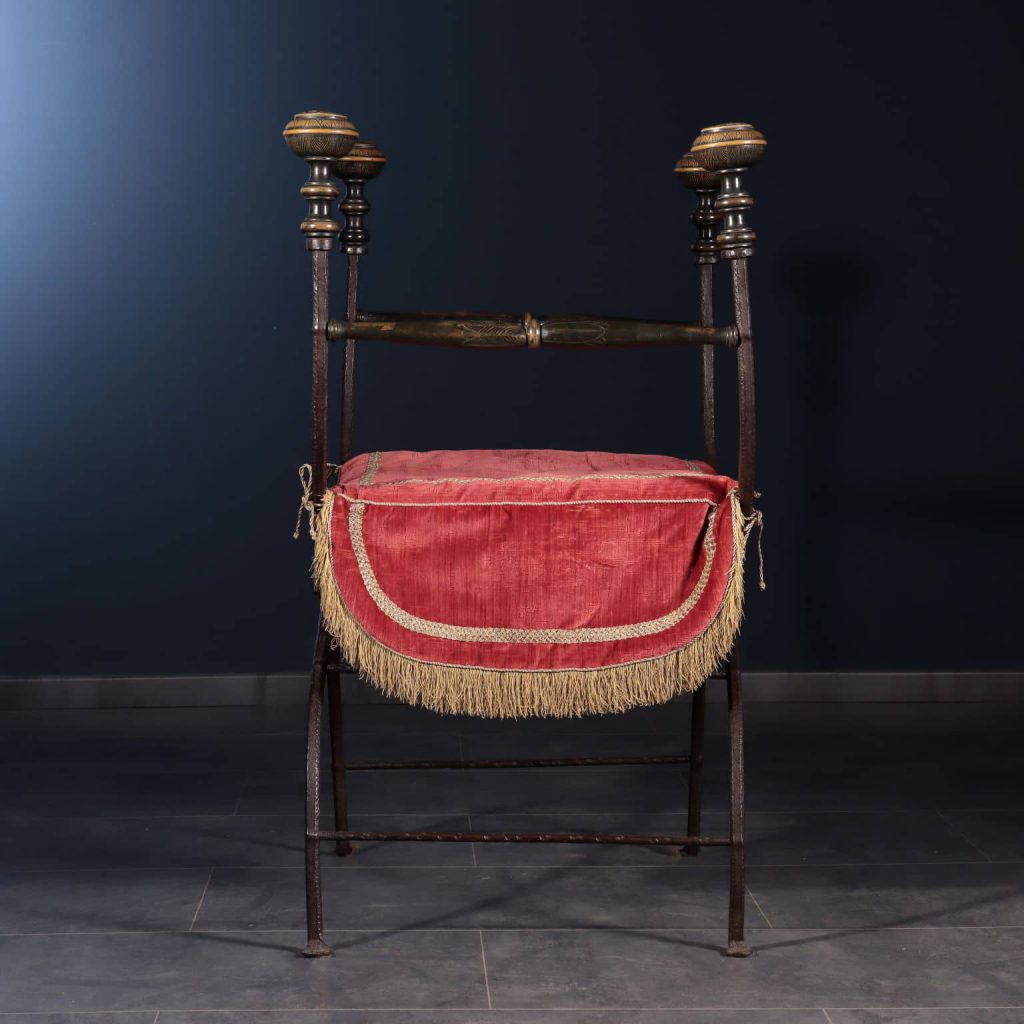Description:
Faldistorio in wrought iron, retractable X-shaped semicircular supports, ending at the top with turned bronze ends with smaller spools and a finely chiseled sphere terminal, in which there is a bishop’s coat of arms with two central cornucopias, identifiable with the coat of arms by Cardinal Bibbiena. Wrought iron rods reinforce and connect the two Xs, the upper crosspieces are covered with turned bronzes and engraved with leaves with a burin processing. The iron surfaces are entirely punched with an eight-pointed star-shaped decoration.
A taut hemp fabric not coeval holds the red velvet cushion with embroidery and golden fringes, not coeval.
Dimensions: 96 x 67 x 55 cm ( 37,8 x 26,4 x 21,6 in )
Historical-critical analysis:
The faldistorio is a curule-type chair, which has spread since at least the 11th century and is widely used by bishops, especially in public ceremonies. The heraldic crest chiseled on the knobs confirms the ecclesiastical use, there is in fact the reduction of the cardinal’s hat, which contains two spheres and two cornucopias, and is therefore attributable to the coat of arms of Cardinal Bibbiena.
Known examples are a coat of arms made by Luca della Robbia the younger for Cardinal Bibbiena, the door made with the inlaid coat of arms from the workshop of Baccio d’Angiolo, as well as the coat of arms of the palace owned by the Cardinal.
Another useful element to date the object, in addition to the client, is the type of iron processing. The wrought iron structure is in fact punched on the entire surface with decorations with small rosettes, stars that repeat themselves, a decoration that we find documented on the waffle irons produced in those years.
Bernardo Dovizi da Bibbiena (Bibbiena 1470 - Rome 1520):
Born to one of the most important Casentino families, in the Arezzo area, Bernardo Dovizi was sent to Florence at a very young age, following his older brother Piero, in the service of the Medici. His training probably took place in the context of the Medici court, where he was officially active starting from 1488. In this year he was in fact sent to Rome to accompany Piero de Medici to meet his betrothed Alfonsina Orsini, but also to strengthen relations of friendship and business with Pope Innocent VIII. From this moment on he became chancellor and diplomat for the noble Florentine family, moving between the most important Italian courts and returning to Rome in 1492, to strengthen ties with the new Pope Alexander VI Borgia.
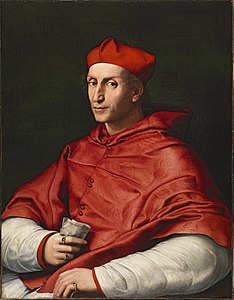
With the descent into Italy of the French troops led by Charles VIII, followed Piero de Medici, now succeeding his father, in exile he was linked in particular to Cardinal Giovanni de ‘Medici, the future Pope Leo X, accompanying him in exile at the Urbino court of Guidobaldo da Montefeltro. Here he came into contact with many of the most important artists and writers of the time, among which Baldassarre Castiglione certainly should be remembered, who made him one of the main interlocutors of Il Cortegiano.
Once Medici was elected at the papal threshold, Bibbiena followed him to Rome, being in turn invested with the cardinal’s purple in the consistory of September 23, 1513. As a direct collaborator of Leo X, he was entrusted with papal correspondence and various and delicate diplomatic missions. .
He died in Rome, returning from Paris, perhaps poisoned, in 1520.
Bibliography:
– Carlo Enrico Rava, La sedia, ed. Gorlich, Milano 1964;
– Augusto Pedrini, Il ferro battuto sbalzato e cesellato in Italia, ed. Società editrice torinese, 1951.
- Faldistorio, for Cardinal Bibbiena, 1513-1520

Antiques, Art and Design
FineArt is the new ambitious Di Mano in Mano project that offers an exclusive choice of antiques and design works, presenting them for their singularity and uniqueness.

